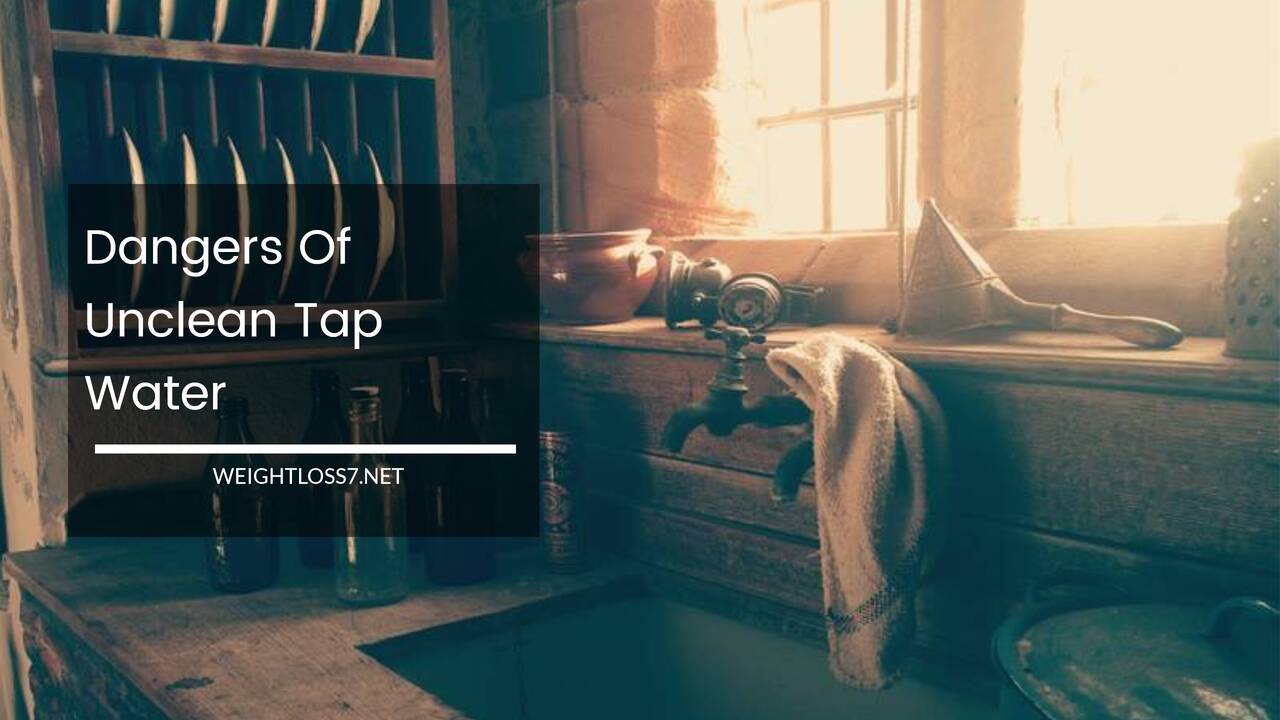Dangers Of Unclean Tap Water

Drinking water from the tap is something you likely do on a fairly regular basis, and with good reason. Drinking tap water versus bottled water is good for the environment, preventing all the waste that comes with drinking bottled water.
Unfortunately there are some downsides to drinking tap water, primarily the health concerns.
While the National Primary Drinking Water Regulations (NPDWR) put in place by the United States Environmental Protection Agency (EPA) protect public drinking water systems from contaminants, you cannot always count on these regulations to protect you.
Many dangers still exist when it comes to drinking tap water outside of big cities or while travelling abroad, including the four major health dangers described below.
Microorganisms Found In Tap Water
The EPA has compiled different studies to provide a variety of charts detailing the possible contaminants and dangers of drinking unclean tap water.
Microorganisms are one area for concern, with seven different bacteria on the provided list. Several of the microorganisms can cause a variety of gastrointestinal illnesses and are caused by human and/or animal feces present in the drinking water.
Another cause for concern is the contaminant known as Legionella, a naturally occurring microorganism which is the cause of Legionnaire’s Disease.
Some bacteria, according to sources like the New York State Health Department are present as a type of “indicator” organisms.
These bacteria, when present, do not pose any danger in and of themselves. Instead, they indicate the presence of more dangerous microorganisms. Good water filtration should eliminate all microorganisms present in drinking water.
Disinfectants and Their Byproducts
Documents contained on the EPA website discuss the presence of disinfectants and byproducts present in drinking water.
Disinfectants like Chloramine and chlorine are present in the drinking water, but are required to appear in levels below the EPA’s maximum containment level (MCL).
If they are present above the MCL (as in unregulated water filtration systems) they do pose some risks. These risks are especially high for pregnant women, infants and children, causing long-term illnesses like anemia.
Organic and Inorganic Chemicals
Chemicals are another major concern, again according to the EPA’s list of potential water contaminants.
Inorganic and organic chemicals are both a potential problem, with an array of chemicals listed in the NDWPR. Inorganic chemicals include copper, barium, nitrite and thallium and typically come from industrial runoff and discharge.
Other sources of these chemicals include household cleaning products, erosion of natural deposits and sewage leaks. Organic chemicals include atrazine, dichloromethane, toluene and xylenes.
Again, the chemicals come from industrial discharge, herbicide runoff and occasional domestic causes.
The various chemicals can cause an array of long-term illnesses including liver and kidney disease, cancer, nervous system damage and skin problems.
Radionuclides Possible In Drinking Water
The final concern the EPA rules regulate are the presence of radionuclides, which cause an increased risk of cancer when present above the MCL in drinking water.
EPA charts include the dangerous alpha particles and beta particles, radium 226 and 228, and uranium.
The radionuclides most commonly exist as a result of natural deposit erosion, but are also caused by man-made deposits and runoff into drinking water.
When it comes to safe drinking water, the EPA does their best to make sure that all public drinking water systems are healthy.
Unfortunately, these regulations don’t always apply, aren’t enforced, or some other issue takes place. When the drinking water filtration is unregulated, tap water can quickly become quite unsafe for consumption.
As an alternative, choosing bottled water is not always the best choice as it can often contain more than 100 times the mandated levels of water contaminants.
Instead, try to use additional filtration and purification systems, turning to bottled water only as a last resort.

















